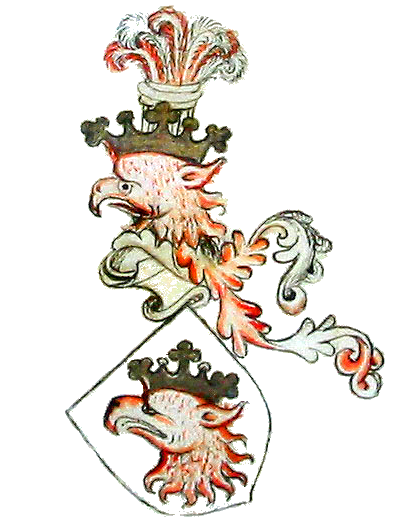|
Swedish Saddlemakers' And Upholsterers' Union
The Swedish Saddlemakers' and Upholsterers' Union ( sv, Svenska Sadelmakare- och tapetserareförbundet, SSoT) was a trade union representing workers in leather goods in Sweden. Background The union was founded on 2 September 1894 in Malmö as the Scandinavian Saddlemakers' and Upholsterers' Union. It established its headquarters in Copenhagen, Denmark, and was an early affiliate of the Swedish Trade Union Confederation. It grew from an initial 70 members to 1,980 in 1930. That year, it relocated its headquarters to Sweden, and from 1939 it restricted membership to Sweden, adopting its final name. Membership increased to a peak of 5,721 in 1950, then fell slightly to 4,974 in 1961. The following year, it dissolved, with about 4,000 members, working in upholstery, transferring to the Swedish Wood Industry Workers' Union The Swedish Wood Industry Workers' Union ( sv, Svenska Träindustriarbetareförbundet, STIAF or Trä) was a trade union representing wood workers in Swede ... [...More Info...] [...Related Items...] OR: [Wikipedia] [Google] [Baidu] |
Trade Union
A trade union (labor union in American English), often simply referred to as a union, is an organization of workers intent on "maintaining or improving the conditions of their employment", ch. I such as attaining better wages and benefits (such as holiday, health care, and retirement), improving working conditions, improving safety standards, establishing complaint procedures, developing rules governing status of employees (rules governing promotions, just-cause conditions for termination) and protecting the integrity of their trade through the increased bargaining power wielded by solidarity among workers. Trade unions typically fund their head office and legal team functions through regularly imposed fees called ''union dues''. The delegate staff of the trade union representation in the workforce are usually made up of workplace volunteers who are often appointed by members in democratic elections. The trade union, through an elected leadership and bargaining committee ... [...More Info...] [...Related Items...] OR: [Wikipedia] [Google] [Baidu] |
Sweden
Sweden, ; fi, Ruotsi; fit, Ruotti; se, Ruoŧŧa; smj, Svierik; sje, Sverji; sju, Sverje; sma, Sveerje or ; yi, שוועדן, Shvedn; rmu, Svedikko; rmf, Sveittiko. formally the Kingdom of Sweden, is a Nordic countries, Nordic country located on the Scandinavian Peninsula in Northern Europe. It borders Norway to the west and north, and Finland to the east. At , Sweden is the largest Nordic country and the List of European countries by area, fifth-largest country in Europe. The Capital city, capital and largest city is Stockholm. Sweden has a population of 10.5 million, and a low population density of ; around 87% of Swedes reside in urban areas in the central and southern half of the country. Sweden’s urban areas together cover 1.5% of its land area. Because the country is so long, ranging from 55th parallel north, 55°N to 69th parallel north, 69°N, the climate of Sweden is diverse. Sweden has been inhabited since Prehistoric Sweden, prehistoric times, . T ... [...More Info...] [...Related Items...] OR: [Wikipedia] [Google] [Baidu] |
Malmö
Malmö (, ; da, Malmø ) is the largest city in the Swedish county (län) of Scania (Skåne). It is the third-largest city in Sweden, after Stockholm and Gothenburg, and the sixth-largest city in the Nordic region, with a municipal population of 350,647 in 2021. The Malmö Metropolitan Region is home to over 700,000 people, and the Øresund Region, which includes Malmö and Copenhagen, is home to 4 million people. Malmö was one of the earliest and most industrialised towns in Scandinavia, but it struggled to adapt to post-industrialism. Since the 2000 completion of the Öresund Bridge, Malmö has undergone a major transformation, producing new architectural developments, supporting new biotech and IT companies, and attracting students through Malmö University and other higher education facilities. Over time, Malmö's demographics have changed and by the turn of the 2020s almost half the municipal population had a foreign background. The city contains many histo ... [...More Info...] [...Related Items...] OR: [Wikipedia] [Google] [Baidu] |
Copenhagen
Copenhagen ( or .; da, København ) is the capital and most populous city of Denmark, with a proper population of around 815.000 in the last quarter of 2022; and some 1.370,000 in the urban area; and the wider Copenhagen metropolitan area has 2,057,142 people. Copenhagen is on the islands of Zealand and Amager, separated from Malmö, Sweden, by the Øresund strait. The Øresund Bridge connects the two cities by rail and road. Originally a Vikings, Viking fishing village established in the 10th century in the vicinity of what is now Gammel Strand, Copenhagen became the capital of Denmark in the early 15th century. Beginning in the 17th century, it consolidated its position as a regional centre of power with its institutions, defences, and armed forces. During the Renaissance the city served as the de facto capital of the Kalmar Union, being the seat of monarchy, governing the majority of the present day Nordic countries, Nordic region in a personal union with Sweden and N ... [...More Info...] [...Related Items...] OR: [Wikipedia] [Google] [Baidu] |
Swedish Trade Union Confederation
The Swedish Trade Union Confederation ( sv, Landsorganisationen i Sverige ; literally "National Organisation in Sweden"), commonly referred to as LO (), is a national trade union centre, an umbrella organisation for fourteen Swedish trade unions that organise mainly " blue-collar" workers. The Confederation, which gathers in total about 1.5 million employees out of Sweden's 10 million people population, was founded in 1898 by blue-collar unions on the initiative of the 1897 Scandinavian Labour Congress and the Swedish Social Democratic Party, which almost exclusively was made up by trade unions. In 2019 union density of Swedish blue-collar workers was 60%, a decline by seventeen percentage points since 2006 (blue-collar union density in 2006: 77%). A strongly contributing factor was the considerably raised fees to union unemployment funds in January 2007 made by the new centre-right government.Anders Kjellberg and Christian Lyhne Ibsen (2016"Attacks on union organizing: Reversi ... [...More Info...] [...Related Items...] OR: [Wikipedia] [Google] [Baidu] |
Swedish Wood Industry Workers' Union
The Swedish Wood Industry Workers' Union ( sv, Svenska Träindustriarbetareförbundet, STIAF or Trä) was a trade union representing wood workers in Sweden. The union was founded on 1 January 1924, when the Swedish Wood Workers' Union was split in two. Like its predecessor, it affiliated to the Swedish Trade Union Confederation. By the end of 1924, it had 8,920 members, and it grew steadily. The Swedish Cooperage Union merged in during 1936, followed in 1949 by the Swedish Sawmill Industry Workers' Union, and in 1962 by the saddlery section of the Swedish Saddlemakers' and Upholsterers' Union.{{cite book , last1=Ebbinghaus , first1=Bernhard , last2=Visser , first2=Jelle , title=Trade Unions in Western Europe Since 1945 , date=2000 , publisher=Palgrave Macmillan , location=Basingstoke , isbn=0333771125 , page=626–630 Membership of the union peaked at 70,261 in 1979, then gradually declined. By 1997, it had fallen to only 49,964. In 1998, it merged with the Swedish ... [...More Info...] [...Related Items...] OR: [Wikipedia] [Google] [Baidu] |
Swedish Shoe And Leather Workers' Union
The Swedish Shoe and Leather Workers' Union ( sv, Svenska Sko- och läderarbetareförbundet, SSoL) was a trade union representing workers in the leather industry in Sweden. The union was founded on 13 August 1888 in Stockholm, as the Swedish Shoemakers' Union, with an initial 366 members. It affiliated to the Swedish Trade Union Confederation in 1899, and membership reached 5,102 by 1907.{{cite book , last1=Ebbinghaus , first1=Bernhard , last2=Visser , first2=Jelle , title=Trade Unions in Western Europe Since 1945 , date=2000 , publisher=Palgrave Macmillan , location=Basingstoke , isbn=0333771125 , page=626–630 In 1962, the union gained about 1,100 members from the dissolved Swedish Saddlemakers' and Upholsterers' Union, and the leather workers from the dissolved United Unions, taking its membership to a peak of 15,450. However, it then declined, in line with employment in the industry, and by 1972 membership was down to 8,083. The following year, it merged with the Swe ... [...More Info...] [...Related Items...] OR: [Wikipedia] [Google] [Baidu] |
Leather Industry Trade Unions
Leather is a strong, flexible and durable material obtained from the tanning, or chemical treatment, of animal skins and hides to prevent decay. The most common leathers come from cattle, sheep, goats, equine animals, buffalo, pigs and hogs, and aquatic animals such as seals and alligators. Leather can be used to make a variety of items, including clothing, footwear, handbags, furniture, tools and sports equipment, and lasts for decades. Leather making has been practiced for more than 7,000 years and the leading producers of leather today are China and India. Animal rights groups claim that modern commercial leather making and the consumption of its products is unethically killing animals. According to the life-cycle assessment (LCA) report for the United Nations Industrial Development Organization, 99% of the raw hides and skins used in the production of leather derive from animals raised for meat and/or dairy production. Critics of tanneries claim that they engage in uns ... [...More Info...] [...Related Items...] OR: [Wikipedia] [Google] [Baidu] |
Trade Unions Established In 1894
Trade involves the transfer of goods and services from one person or entity to another, often in exchange for money. Economists refer to a system or network that allows trade as a market. An early form of trade, barter, saw the direct exchange of goods and services for other goods and services, i.e. trading things without the use of money. Modern traders generally negotiate through a medium of exchange, such as money. As a result, buying can be separated from selling, or earning. The invention of money (and letter of credit, paper money, and non-physical money) greatly simplified and promoted trade. Trade between two traders is called bilateral trade, while trade involving more than two traders is called multilateral trade. In one modern view, trade exists due to specialization and the division of labour, a predominant form of economic activity in which individuals and groups concentrate on a small aspect of production, but use their output in trades for other produc ... [...More Info...] [...Related Items...] OR: [Wikipedia] [Google] [Baidu] |



